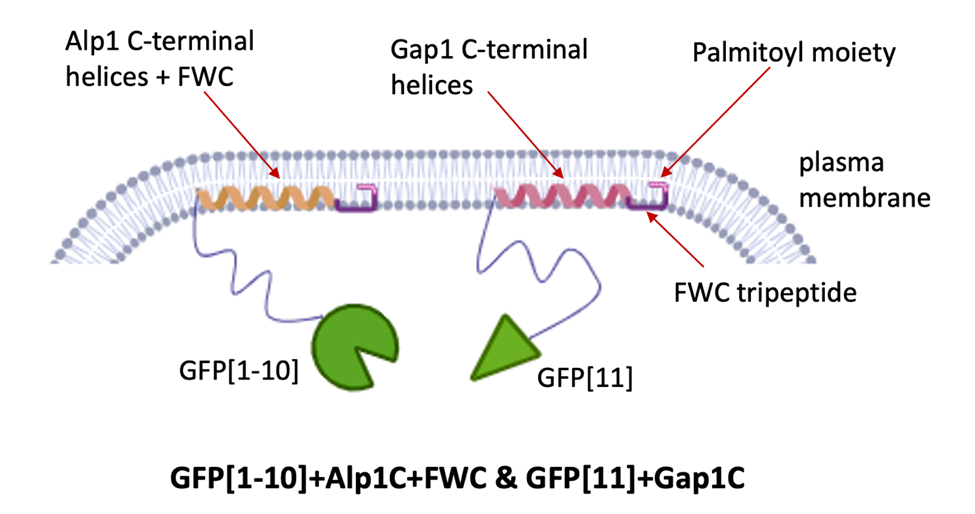Advantages
- Localization of protein interactions at the cell membrane offers a more physiologically relevant model
- Improved screening by minimizing off-target interactions
- Broadly applicable and accessible tools
Summary
Protein-protein interactions involving membrane proteins are notoriously difficult to study under physiologically relevant conditions. Many established methods focus on nuclear or cytosolic interactions and cannot fully replicate the native membrane context. Conventional split fluorescent protein systems often suffer from inefficiencies in reconstitution, potential over-expression artifacts, and challenges in targeting specific membrane regions. Additionally, extraneous background signals or nonspecific binding can cloud the interpretation of results, especially when attempting to track transient or weak interactions. As such, researchers require strategies that effectively anchor proteins at the membrane without compromising their natural conformations or interaction domains to ensure that the observed interactions reflect the true cellular environment.
Combining split GFP technology with yeast cells, this system anchors proteins at the plasma membrane through C-terminal helices from Alp1 and Gap1 and a palmitoylated linker. This in turn reconstitutes GFP fluorescence upon protein interaction. Flow cytometry and confocal microscopy confirm successful membrane localization, and nutrient-deficient media as well as adjustable induction times reduce overexpression artifacts.

Schematic for Alp1C+FWC and Gap1C -terminal domains docking to the plasma membrane.
Desired Partnerships
- License
- Sponsored Research